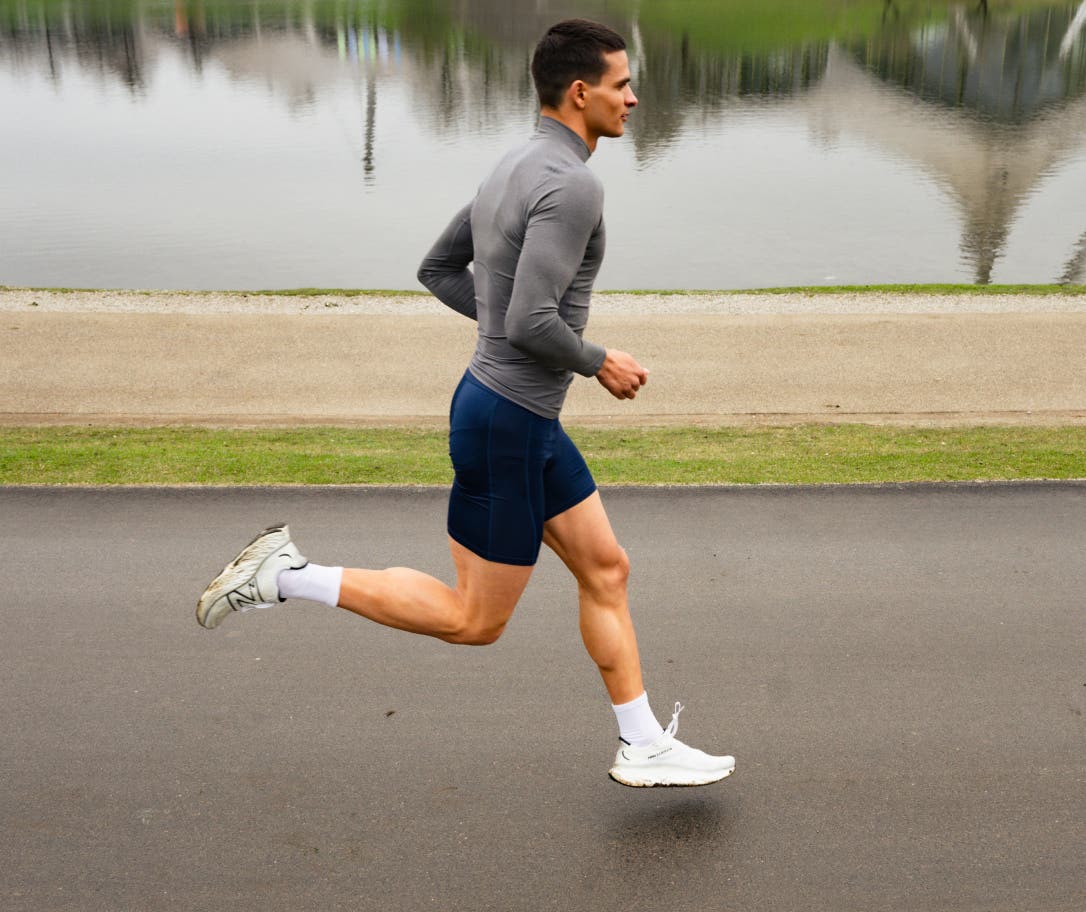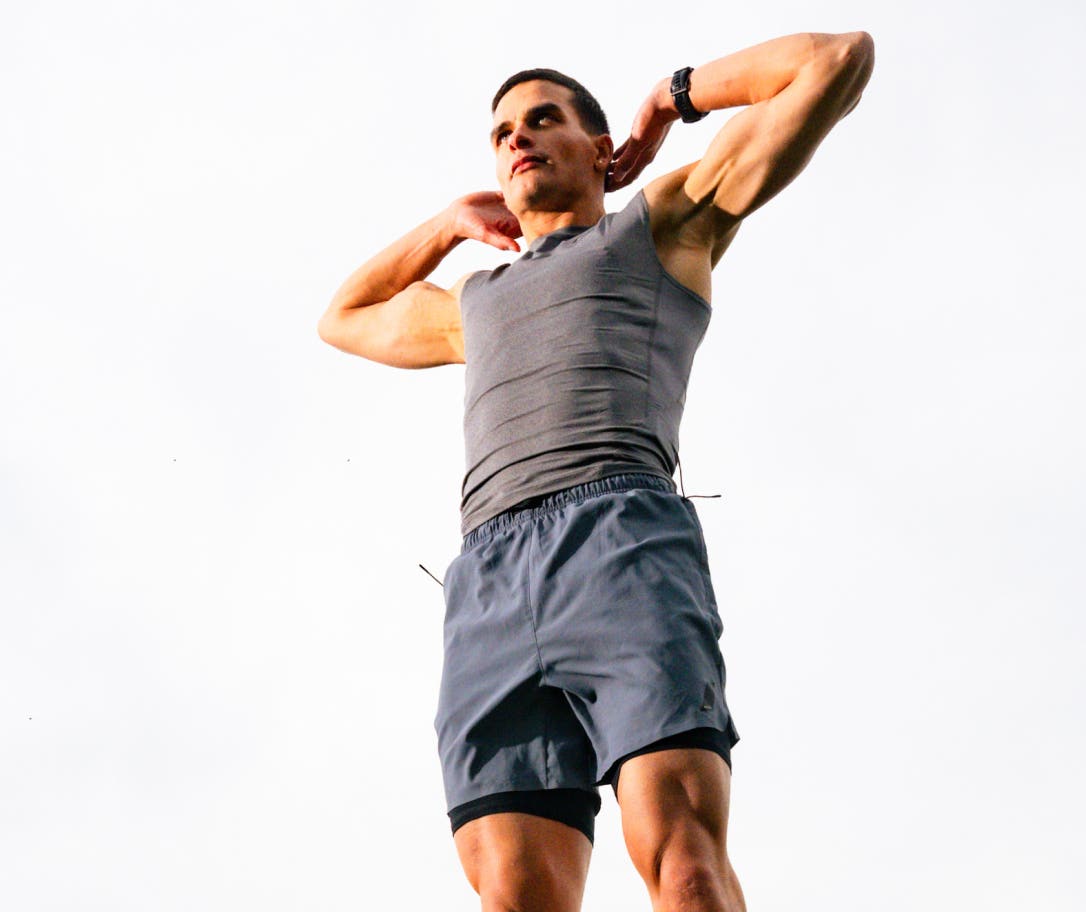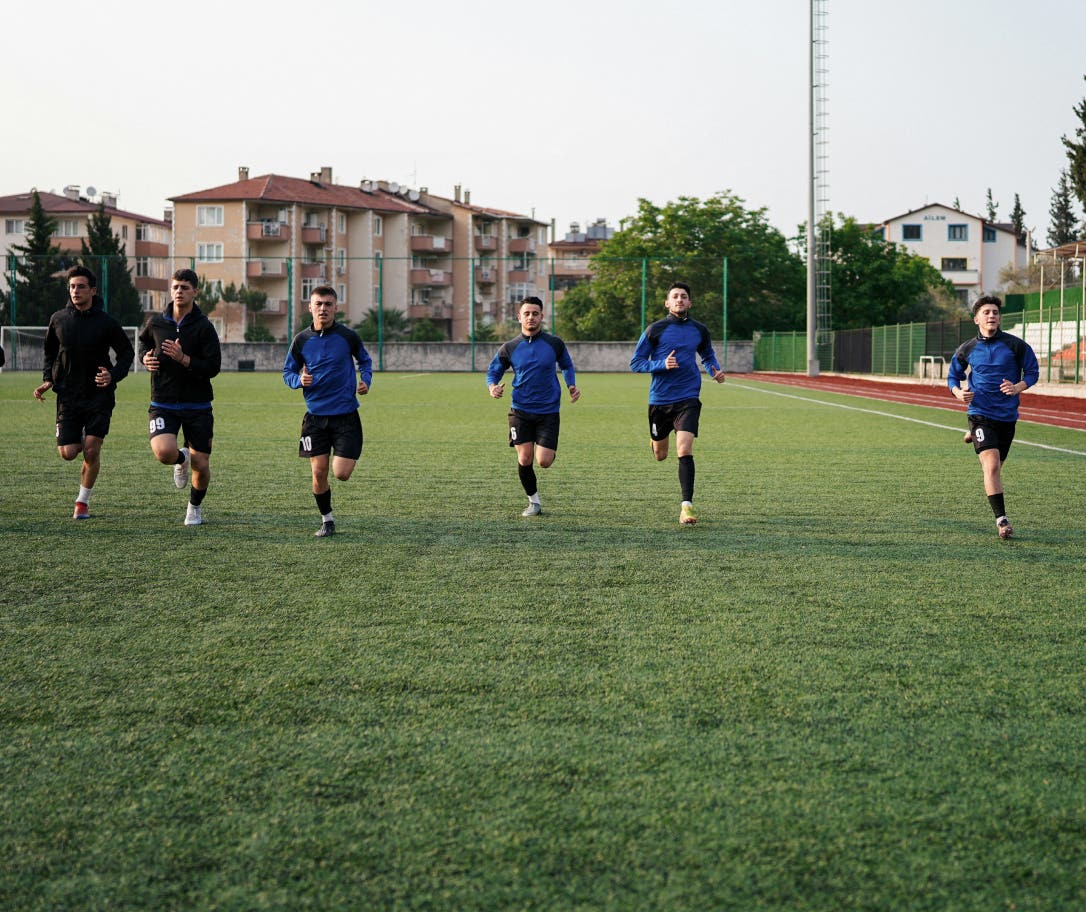Conditioning or sports conditioning, as it is commonly known, refers to the training you need to do to develop both the physical and physiological capacities needed for optimal performance.1
Although athletes will stick to sport-specific conditioning programs, everyone can benefit from improved endurance, agility, strength, and even recovery. In essence, conditioning improves your movement, performance, and helps you avoid injury, whether you’re on the field, the slopes, or powering through daily life.
In this guide, we take a closer look at what conditioning is, what it does, the different types, and how you can seamlessly incorporate it into your training program.
What is conditioning?
At its simplest, conditioning is a type of training session that’s designed to improve your physical fitness and sport performance by focusing on increasing strength, endurance, and power, enabling you to meet the demands being placed on your body.
There are two major types of conditioning based on what you are trying to achieve. Sports-specific conditioning will target exact movements, muscle groups, or energy demands of a particular sport. For example, training for football will differ from the training needed for downhill skiing, or basketball because they will have different energy and physical demands.
General conditioning, on the other hand, focuses on building your overall performance, but ultimately, both types aim to help you compete at your best, protect you against injury, and speed up recovery.

Key components of conditioning
Typically, there are 5 key components of sports conditioning to consider. They are:
- Endurance: This can be the ability to run long distances (like running a marathon), but it can also be performing repeated efforts with less fatigue (like soccer or football). Both are forms of endurance and critical for cardiovascular fitness, stamina, and mental strength.
- Strength: Strength is key for all athletes because it supports every movement. It’s often considered the ability to lift heavy weights, but it’s about building muscles that are strong and able to stabilize the body during movement. Focusing on strength training will improve posture, power, balance, and lower injury risk.
- Power: The combination of strength and speed, power is important for athletes who need to generate force quickly, such as sprinting out of blocks or making a powerful jump to score a basket.
- Speed: Speed is a pinnacle for any athlete, whether it’s sprinting away from your opponent on the track or sprinting to reach a drop shot in a tennis match, increasing your speed can dramatically improve your performance.
- Agility: Changing direction quickly without losing your balance can improve your explosive power and is crucial for athletes who need to react quickly to rapidly changing situations.
Energy systems and conditioning
The human body relies on different energy systems depending on the intensity and duration of the activity you’re participating in. The body has two primary systems for utilizing energy, the anaerobic and aerobic energy systems. Anaerobic being without oxygen, while aerobic works with oxygen.
When it comes to sport and athletic performance, your body may use these systems interchangeably. For example, for quick or explosive bursts of movement, like sprinting, the anaerobic system will be the main energy generator.
However, when the explosive bursts stop or for the in-between play moments, such as jogging around the pitch, the aerobic system will help the body recover and ensure it is ready to go again.2
The anaerobic and aerobic systems can be broken down further into the following categories:
| Energy system | Aerobic or anaerobic? | Definition |
|---|---|---|
| Phosphagen system | Anaerobic | Provides immediate energy for very short, explosive efforts lasting no more than 10 seconds |
| Glycolytic system | Anaerobic | Provides energy by breaking down glucose without oxygen for activities lasting 20 to 120 seconds. It’s the most overused form of conditioning but also the hardest. |
| Oxidative system | Aerobic | Uses oxygen to generate energy for longer periods, more than 2 minutes, sustaining your heart rate between 120 and 155 bpm |

Methods of conditioning
Several methods of conditioning exist and they are not all created equal. Some will target both energy systems simultaneously, but there are benefits to having exercise programs that target one energy system at a time, as we’re about to explain.
1. HIIT
High-intensity interval training or HIIT is one of the most popular sports conditioning methods because it stresses both the aerobic and anaerobic energy systems, improving both types of fitness.
By repeatedly pushing your body to its limit, HIIT improves your VO₂ max and pushes back your lactate threshold. This means your body becomes more efficient at using oxygen and resisting fatigue, allowing you to perform high-effort activities for longer before tiring or experiencing sore muscles.
Important for: activities demanding busts of power e.g., football, weightlifting, sprinting
2. Zone 2 Training
Zone 2 training, also known as base training, builds endurance and improves cardiovascular health. It involves working at 60 to 70% of your maximum heart rate (HRmax). You can estimate your HRmax by subtracting your age from 220.
Zone 2 training builds aerobic fitness by training at a low and steady intensity that’s easy to sustain, and primarily uses fat as its fuel, improving metabolic health.
It’s considered a cornerstone for endurance training and helps to build a strong base for more intense activities. It is also considered essential for long-term cardiovascular health.
Plus, by training at a lower intensity, you’re at a lower risk of injury, and it prevents overtraining.
Important for: Marathon running, cycling, triathlon
3. Circuit training
Circuit training builds strength and endurance by combining strength and cardio exercises in one session. It typically involves rotating through a circuit of up to 10 different exercises targeting various muscle groups with minimal rest in between.
Because it involves cardiovascular, endurance, resistance, and high-intensity exercises, circuit training helps build total body endurance and keeps your heart rate elevated.
Important for: Anyone who requires quick bursts of energy such as sprinters, footballers, hockey players, basketballers
4. Speed and agility training
Speed and agility training improves reaction time, agility, and quickness. It is essential for athletes who require rapid changes in direction and speed, like those in team sports.
Drills such as ladder drills and shuttle runs can sharpen footwork, increase reaction time, and improve explosive movements that are essential for numerous sports.
Important for: Footballers, tennis players, downhill skiers
Whichever sport you participate in, understanding the unique combinations of these types of conditioning and their benefits is important. For example, if you are a long-distance runner, you’ll likely need to focus your efforts on aerobic conditioning that will sustain your effort for long periods, like zone 2 training.
If you’re a heavyweight boxer, you’re more likely to focus on anaerobic conditioning alongside strength and agility training to help you land powerful shots and dodge them from others.

Importance of periodization in sports conditioning
Another key concept in sports conditioning is periodization. This involves strategically organizing your training into distinct phases to maximize performance and minimize the risk of injury. It enables you to peak at the correct times, like during a competition, but also avoids injury and burnout.3
Periodization is usually split into three distinct phases:
- Macrocycles: This is the overall long-term training plan and usually lasts for at least a year and focuses on improving base fitness, performance, and getting your body ready for peak performance.
- Mesocycles: A smaller, intermediate phase of training that focuses on a specific training or performance goal like speed, strength, or endurance, and usually lasts for 4 to 12 weeks. This phase tends to follow a few weeks of progressive training, followed by a week of lower intensity sessions.
- Microcycles: The shortest of the training cycles which lasts for one to two weeks and focuses on sharpening your skills and honing in on recovery.
By using periodization to plan your training, you can gradually increase the intensity of your training to ensure you peak at the right time and avoid overtraining and injury.
How to incorporate conditioning in your training regime
Incorporating conditioning into your workout routine doesn’t need to be complicated. However, you will need to approach it thoughtfully and in line with your fitness goals and current ability level. Here are some practical ways to help you get started:
Start small and build gradually
If conditioning is a new concept for you, avoid jumping straight in and doing too much too soon. Begin by adding focused conditioning sessions 1-2 times a week, such as a short HIIT workout or a moderate zone 2 session, to allow your body to adapt gradually without injury. Increase volume and intensity over time.
Match conditioning to your goals and sport
Tailor conditioning to your needs. So, if you’re looking to improve endurance, prioritize aerobic sessions. If you play a sport like football or basketball, focus on agility training, sprint intervals, and circuit training.
Keep it varied
Avoid boredom and stay motivated by mixing up the conditioning techniques you use. This will keep your training engaging but also target different energy systems. Switch it up between HIIT, zone 2, and sport-specific drills to enhance your all-around fitness and prevent training plateaus.
Don’t forget about recovery
Conditioning challenges your body, so prioritizing recovery is vital. Build in rest days. Ensure you’re getting enough sleep, hydration, and fuel to help your body repair.
Apply recovery techniques. Listen to your body and take a break if you’re feeling sore or fatigued. Try active recovery sessions like stretching and walking to aid the repair process.
Let’s recap
Sports conditioning is training that develops your physical and physiological capacities to help perform at your best. It is used to enhance endurance, power, strength, speed, and agility. No matter where you are on your fitness journey, conditioning can benefit you by improving how your body performs and recovers.
Sources
[1] Kibler, W. B., & Chandler, T. J. (1994). Sport-specific conditioning. The American journal of sports medicine, 22(3), 424–432. Available here
[2] Patel, H., Alkhawam, H., Madanieh, R., Shah, N., Kosmas, C. E., & Vittorio, T. J. (2017). Aerobic vs anaerobic exercise training effects on the cardiovascular system. World journal of cardiology, 9(2), 134–138. Available here
[3] Strohacker, K., Fazzino, D., Breslin, W. L., & Xu, X. (2015). The use of periodization in exercise prescriptions for inactive adults: A systematic review. Preventive medicine reports, 2, 385–396. Available here